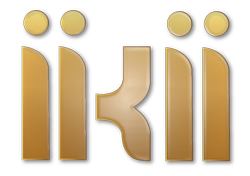Research Article
A Comparative Study of Audience Experience in Traditional and Interactive Movie
More Detail
1 Xiamen Academy of Arts and Design, FuZhou University, Xiamen, China* Corresponding Author
International Journal of Social Sciences and Artistic Innovations, 4(4), 2024, 0003, https://doi.org/10.35745/ijssai2024v04.04.0003
Published Online: 06 November 2024, Published: 04 November 2024
OPEN ACCESS 27 Views 24 Downloads
ABSTRACT
Traditional movie offers audiences a "movie myth" experience through the comprehensive use of sound, light, and electricity and realistic narratives.With the advancement of scientific levels and the emergence of new media, movie art has derived more forms and content.Interactive movie is considered a new form of movie with its interaction and participation with audiences as its characteristics, providing a different audience experience from traditional movie. This article focuses on the dimension of audience experience, compares the narrative structure, emotional mode, and interactive form of traditional movie and interactive movie for research purposes, analyzes the different experiences of audiences when watching traditional movie and interactive movie, explores the core audience experiences.It inspires moviemakers to reflect on their work in order to optimize and enhance the audience experience with interactive movies by creating better interactive movie works that provide narrative references in terms of emotion as well as interactivity.
CITATION (APA)
Lin, Y., & Chu, Y. (2024). A Comparative Study of Audience Experience in Traditional and Interactive Movie. International Journal of Social Sciences and Artistic Innovations, 4(4), 0003. https://doi.org/10.35745/ijssai2024v04.04.0003
REFERENCES
- Sun, L.J. & Liu Y.J. (2011). Research and Development of Third Generation Movies in the Digital Interactive Era. Journal of Beijing Film Academy, 27(4), 45–50.
- Zheng, Y. L. & Bin, H.(1995). History of Foreign Movies. Beijing, China: China Film and Television Press.
- Li, Z.H.(2023). Interactive movie breakthrough in the era of integrated media. China Newspaper Industry, 35(14), 72–73.
- Zhong, S.H.(2022). Embodied behavior, participatory affect and the construction of interactivity: an examination centered on early interactive movie practices. Contemporary Movies, 38(6), 59–65.
- Anna, H.O. , Jiang, L.X. & Wang, W.B.(2023). Eisenstein, neurocinematography and embodied cognition. Journal of Beijing Film Academy, 39(9), 16–23.
- Jauss, H.R.& Holub, R.C. (1987). Acceptance aesthetics and acceptance theory. Liaoning, China: People's Publishing House.
- Bazin, A.(2018). What is a movie. Beijing, China: Culture and Art Press.
- Zhu, L.(2017), Busan Bound: Following and Transcending the Hollywood Narrative. Movie Literature. 59(14),140–142.
- Wikipedia (2016, January, 13). Three-act structure. Wikipedia.org. https://en.wikipedia.org/wiki/Three-act_structure
- Huang, M.F.(2001). Hypertextual Poetics. Xiamen, China: Xiamen University Press. pp. 13–14.
- Robinson,T.(2018). The Reddit detectives are hard at work decoding Black Mirror: Bandersnatch. Available online: https://www.theverge.com/2018/12/28/18159516 (accessed on October 28, 2024)
- Zhong, H.S.(2021). From Participatory Attraction to Spectator Attraction: Media Archaeology Based on Chinese Movie Perspectives--Taking Cityscape and Western Mirror as Examples. Journal of Beijing Film Academy, 37(4), 75–85.
- Mulvey, L. & Zhang, H.J.(1992). Movies and New Methods. Beijing, China: China Radio and Television Press.
- Issel & Huo, G.H.(1988). A Study of the Aesthetic Process. Beijing, China: People's University of China Press.
- Straffen, W., Hutamo, E. , Parika, J. & Tang, H.J.(2018). Media Archaeology: Methods, Paths and Meanings. Shanghai, China: Fudan University Press.
- David, C. (2019). Exploring the Future and Possibilities of Interactive Movie Games, Interview with David Cage. Available online: https://www.gcores.com/articles/114905 (accessed on October 28, 2024)


 The articles published in this journal are licensed under the CC-BY Creative Commons Attribution International License.
The articles published in this journal are licensed under the CC-BY Creative Commons Attribution International License.